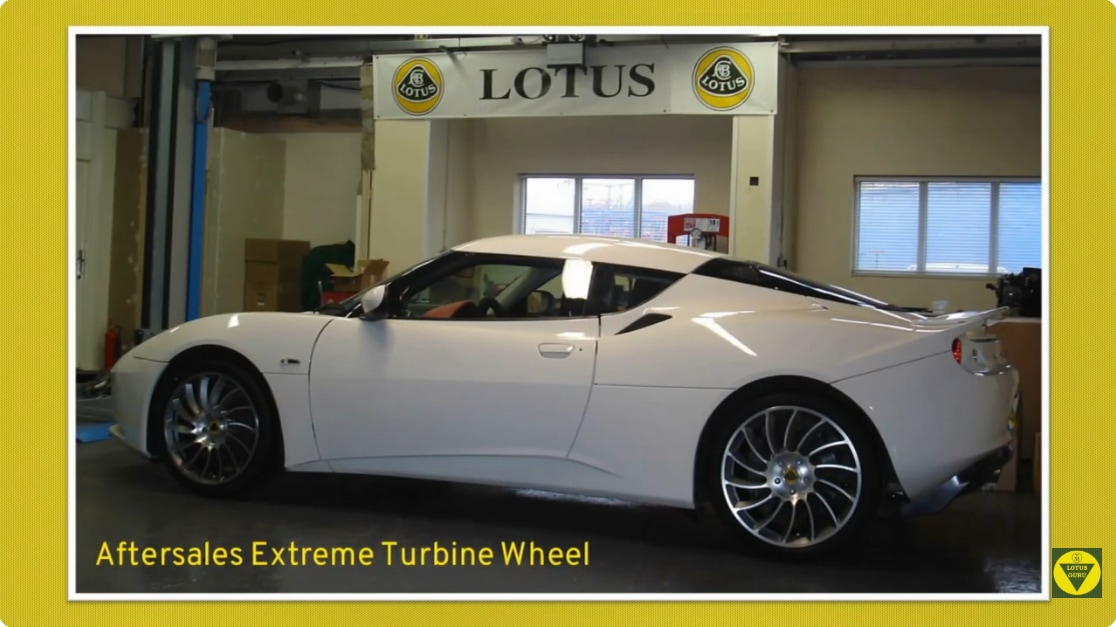
This video provides a detailed overview of the rear components of the Lotus Evora, focusing on the subframe, suspension, brakes, wheels, and tires.
Here's a breakdown of the key points:
Subframe:
Made from hot-rolled steel and hot-dipped galvanized.
Weighs approximately 50 kg.
Functions as a crash structure designed to collapse progressively in a rear-end collision, protecting occupants and the main tub.
Replacement cost for a subframe is about £1,700, and a partial body including the tub is £17,500.
Lotus also produced titanium subframes, which were riveted together.
Suspension:
Uses forged aluminum wishbones, unique to Lotus and made in Italy.
The upper wishbone assembly is interchangeable side-to-side and is common across all Evora models, with variations in bushing stiffness.
The hub carrier is made from forged steel and is unique to Lotus.
The hub bearing assembly is the same for all four wheels across all Evora variants and includes a speed sensor ring.
The Evora features a rear anti-roll bar, with different diameters for normally aspirated cars (black, 21mm) and Evora S models (grey, 21.5mm).
Springs are supplied by Eibach, and dampers by Bilstein.
Ohlins TTX two-way adjustable dampers were standard on GT430 models and an option on GT410 models, costing around £2,350 for a single rear unit.
Rear toe is adjustable via a two-part steel forging tow link control assembly.
Camber is adjusted through an eccentric bolt on the rear inner pivot of each lower wishbone.
Lotus cars are sensitive to incorrect suspension geometry settings, which must be checked with the vehicle at its mid-lane ride height.
Brakes:
Original Evora models featured four-piston Lotus-branded AP Racing calipers all around.
Discs were one-piece, curved-vein ventilated, and cross-drilled, with sizes of 350x32mm front and 332x26mm rear.
Replacement front calipers cost about £300, rears about £380. Front discs are £240/pair, rears £280/pair.
The 400 series cars received a brake upgrade, with AP Racing branded calipers and two-piece cast iron discs that increased in size to 370x32mm front and 350x26mm rear.
The GT430 gets groove discs with a J-hook design pattern.
The handbrake is a cable-operated drum brake incorporated into the rear discs.
Tip: When parking for extended periods, ensure brakes are dry and leave the car in gear or park with the handbrake off to prevent pads from sticking to the discs.
Wheels and Tires:
Various styles, finishes, and options for cast or forged wheels were available.
Special wheels were offered for the GCC (Gulf Cooperation Council) market to accommodate a spare wheel and jack.
After-sales options included the "Extreme Turbine" wheels.
All wheels are manufactured by Rimstock in the UK.
From the start of production until the 400 series, Pirelli P Zero tires were used for summer and Yokohama W Drive for winter.
The 400 series models introduced Michelin Pilot Super Sport, then Pilot Sport 4S.
Evora Sport 410, GT410 Sport, and GT430 Sport models feature Michelin Pilot Sport Cup 2 with a star sidewall marking.
The Evora GT430 uses Michelin Pilot Sport Cup 2 XL with an N0 sidewall marking.
Winter tires for the 400 series are Michelin Pilot Alpine.
Source: https://www.youtube.com/watch?v=hsmIbf2cQbI&t=24s
Source: https://www.youtube.com/watch?v=hsmIbf2cQbI&t=24s